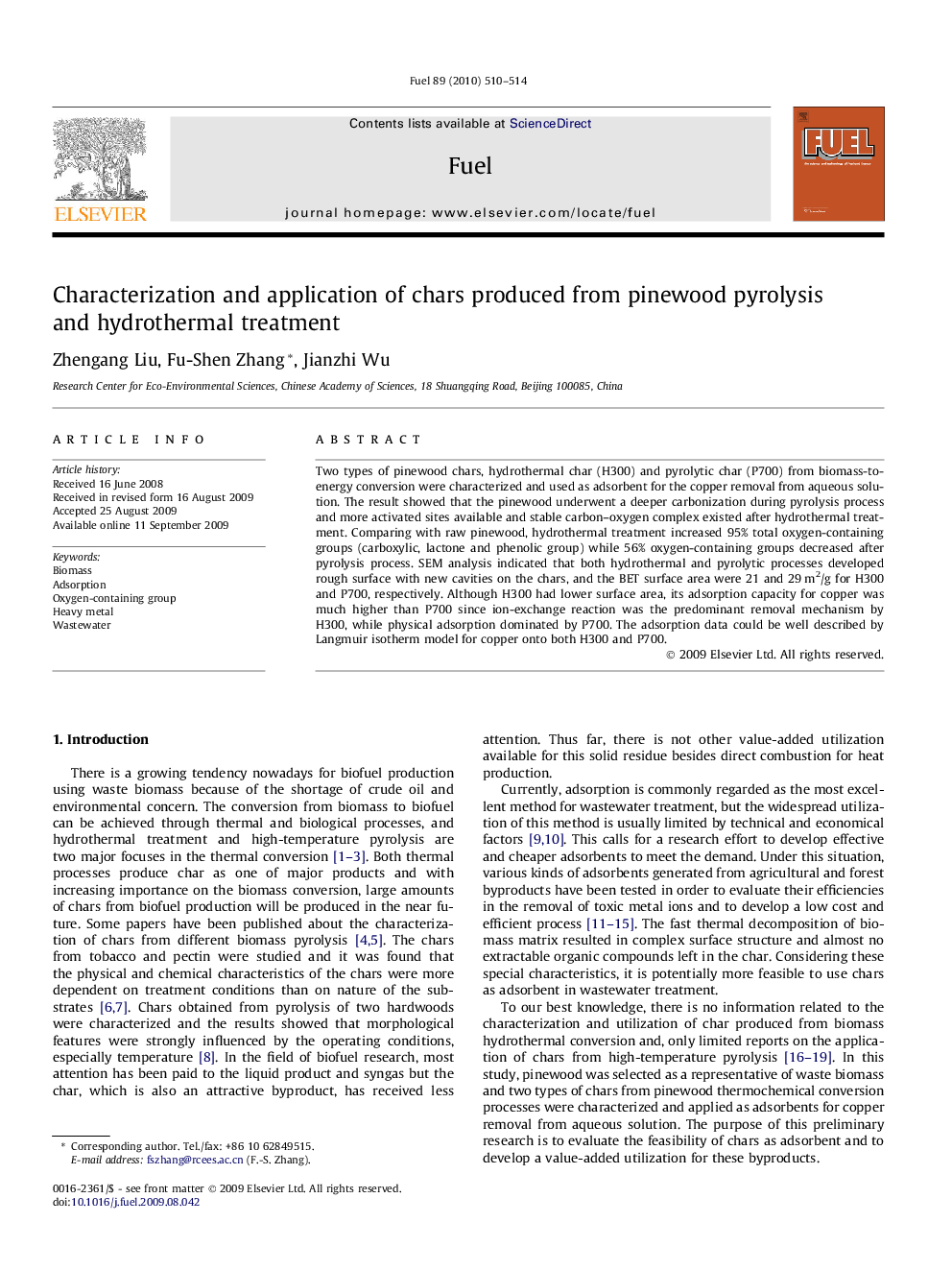| Article ID | Journal | Published Year | Pages | File Type |
|---|---|---|---|---|
| 206619 | Fuel | 2010 | 5 Pages |
Two types of pinewood chars, hydrothermal char (H300) and pyrolytic char (P700) from biomass-to-energy conversion were characterized and used as adsorbent for the copper removal from aqueous solution. The result showed that the pinewood underwent a deeper carbonization during pyrolysis process and more activated sites available and stable carbon–oxygen complex existed after hydrothermal treatment. Comparing with raw pinewood, hydrothermal treatment increased 95% total oxygen-containing groups (carboxylic, lactone and phenolic group) while 56% oxygen-containing groups decreased after pyrolysis process. SEM analysis indicated that both hydrothermal and pyrolytic processes developed rough surface with new cavities on the chars, and the BET surface area were 21 and 29 m2/g for H300 and P700, respectively. Although H300 had lower surface area, its adsorption capacity for copper was much higher than P700 since ion-exchange reaction was the predominant removal mechanism by H300, while physical adsorption dominated by P700. The adsorption data could be well described by Langmuir isotherm model for copper onto both H300 and P700.
